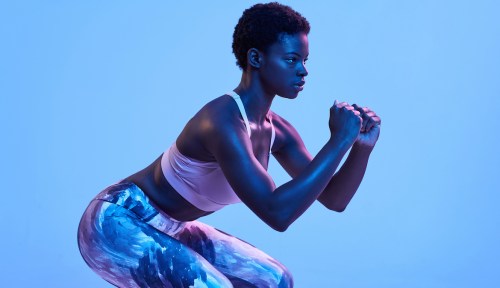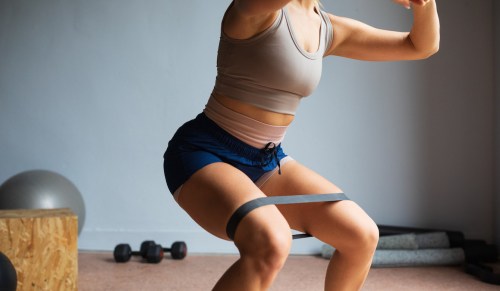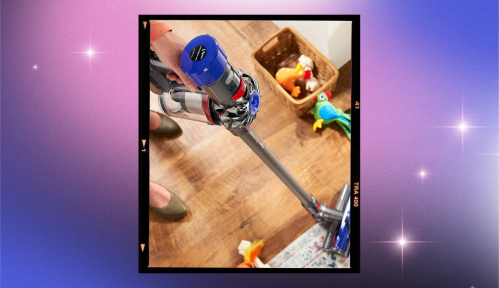You knew that your workout earlier in the week was a killer. But now it’s been two days, and you still have sore muscles after the workout. Is that a sign of an especially good training session, or a red flag that you overdid it? How can you tell the difference between the kind of soreness that means you worked hard, and the kind that indicates something is wrong?
Experts in This Article
chiropractor and founder of Broadway Chiropractic &
exercise physiologist and founder of Own It
corrective exercise specialist
exercise physiologist at the Hospital for Special Surgery in New York City
And, maybe most importantly, what the heck can you do now to relieve those extreme muscle aches?
First things first, why do we get sore after working out?
The pain we feel after an intense gym session can be blamed on inflammation and tiny tears in the muscle fibers (that eventually grow back stronger and lead to #gains). “Sore muscles are known as delayed-onset muscle soreness, or DOMS, which can occur after physical activity, a new exercise program, or changing your exercise routine or increasing the intensity and duration of your normal workout,” Tatiana Lampa, a trainer and corrective exercise specialist, previously explained to Well+Good about why our muscles get sore.
How tender and stiff you end up can vary widely. DOMS might just make you feel a little achy, or you could experience can’t-get-out-of-bed debilitating pain, as Timothy Coyle, MS, an exercise physiologist at the Hospital for Special Surgery in New York City put it to Well+Good.
Why you might be extra sore days after a workout
One thing to note: You really shouldn’t be sore all the time. “In a lot of fitness spaces, there’s a culture that tells people if they’re not sore, not sweating profusely, and not getting peeled off the ground at the end of a workout, they’re not working hard enough. But if we’re training appropriately, that’s really not the case,” says Justin Roethlingshoefer, an exercise physiologist and founder of Own It, a digital platform that helps coaches interpret fitness tracker data for their athletes.
However, intense or lingering muscle soreness isn’t always a sign that you worked too hard, either. Soreness is typically triggered by activities you aren’t accustomed to, so if you tried a new class or went water skiing on vacation, don’t be surprised if your muscles ache afterward.
In particular, soreness is often associated with eccentric muscle action. That’s when a muscle is contracting as it’s lengthening: think running downhill, or lowering down into your squat or push-up. So if your workout included lots of eccentric muscle actions—like maybe if you lifted weights at a slower tempo than usual—it’s normal to feel sore afterward.
Know that a “normal” amount of soreness is different for every body
If your muscle soreness often lingers, that might just be what’s typical for your body. According to Roethlingshoefer, there are genetic factors that make some people predisposed to more soreness than others. First, some of us produce higher levels of interleukin 6, a protein created by the immune system and involved in the body’s inflammatory response. “When interleukin 6 is higher, that tells us we are genetically prone to having more inflammation, which means we’re going to be more prone to soreness,” Roethlingshoefer says.
Another biomarker, called superoxide dismutase 2—SOD2 for short—is an enzyme that helps your body break down toxins, a necessary part of muscle recovery. “If you happen to have that gene for high inflammation paired with low SOD2, you may be more prone to having muscle soreness for days after a hard workout,” says Roethlingshoefer.
There are genetic tests on the market that can identify these and other factors that affect sports performance. If you’re a serious athlete, it might be worth talking to a sports physiologist to see if genetic testing could be worthwhile for you. But even in the absence of fancy tests, trust your sense of what’s normal for your body: If you’re unreasonably more sore than usual, or the soreness is lasting for longer than usual (say, four to six days after working out), that’s your sign that something is amiss.
So what are the indicators that you really have overdone it?
If you track your heart rate variability, a sudden plunge that lasts for several days is a sign of overtraining. So are sleep disruption and elevated heart rate for 24 to 48 hours, says Roethlingshoefer. These are all signals that you’ve stressed out your body, and it’s time to focus on rest and recovery.
Also be on the lookout for the symptoms of rhabdomyolysis, “a serious condition that can be fatal or result in long-term disability,” he says. Several factors can lead to this condition, but one of the most common causes is high intensity exercise. The classic triad of symptoms includes pain in the shoulders, thighs, and low back; muscle weakness or trouble moving the extremities; and dark brown urine. If you notice these, see your doctor right away to get treated and tested.
How to relieve sore muscles after a workout
If you’re really sore but not experiencing any red flag symptoms, the issue may not be your training—it might be what you did (or didn’t) do afterward. There are several proactive steps you can take to help relieve muscle aches.
Get your zzzs
The first step is making sure you get plenty of sleep. “Non-REM sleep is associated with the highest levels of growth hormone release during a day, allowing muscles to heal and grow,” Ben Smarr, science advisor to Oura and assistant professor at UCSD Bioengineering & Data Science, has told Well+Good. Human growth hormone is what helps repair those tiny muscle tears that are making you sore—and research shows our bodies produce 95 percent of our typical daily dose during slow wave sleep. So don’t skimp on snoozing!
Consider what you’re eating and drinking
Be sure to hydrate well—water helps lubricate our muscles, and they’re more liable to feel stiff if we’re dehydrated. If persistent soreness is an issue for you, Roethlingshoefer suggests checking in with a dietitian to see if you can adjust your diet to better combat inflammation. (Think: more berries and mushrooms.)
Try compression
You can also try wearing compressive garments after a workout, like compression socks or boots. These can help improve blood flow and bring circulation to whatever area of the body that you’re wearing them. So if it’s your calves that are cranky, a pain of tall compression socks might be just the thing.
Do some massage or stretching
Not sure whether to massage or stretch for muscle stiffness? If you have general muscle tightness, focus on stretching out those aching muscles, but if you can locate a particular knot, focus on massaging it out, whether through foam rolling, a massage gun, or a professional massage, according to chiropractor Jeffrey Klein, DC, founder of Broadway Chiropractic & Wellness Center in New York City.
Feel like a stretch might help? Try this routine:
Alternate heat and cold
Another tried-and-true recovery technique is to use alternating heat and cold, like going from a sauna to a cold plunge. This can also help encourage better blood circulation. “Always end with cold,” Roethlingshoefer says. If you do have access to a sauna, he recommends trying some gentle, static stretching while in the heat.
And remember: All of these strategies are tools you can use regularly as part of your post-workout recovery to prevent soreness before it even sets in. “Often, we’re not actually overtrained. We are under-recovered,” says Roethlingshoefer.
Sign Up for Our Daily Newsletter
Get all the latest in wellness, trends, food, fitness, beauty, and more delivered right to your inbox.
Got it, you've been added to our email list.











